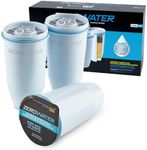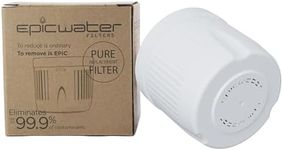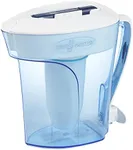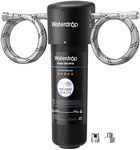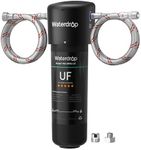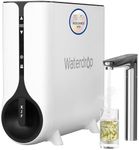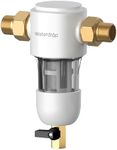Buying Guide for the Best Fluoride Water Filters
Choosing the right fluoride water filter is essential for ensuring that your drinking water is safe and free from excessive fluoride, which can have health implications. When selecting a fluoride water filter, it's important to consider various specifications that determine the filter's effectiveness, capacity, and suitability for your household needs. Understanding these key specifications will help you make an informed decision and ensure that the filter you choose meets your specific requirements.Filtration TechnologyFiltration technology refers to the method used by the filter to remove fluoride from the water. This is important because different technologies have varying levels of effectiveness in removing fluoride. Common technologies include activated alumina, reverse osmosis, and bone char carbon. Activated alumina is effective and commonly used for fluoride removal, while reverse osmosis is a comprehensive filtration method that removes a wide range of contaminants, including fluoride. Bone char carbon is a natural method that can also be effective. When choosing, consider the level of fluoride in your water and whether you need to remove other contaminants as well. If fluoride is your primary concern, activated alumina or bone char might suffice, but for broader filtration needs, reverse osmosis could be more suitable.
Filter CapacityFilter capacity indicates how much water the filter can process before it needs to be replaced. This is important because it affects the maintenance frequency and long-term cost of the filter. Capacities can range from a few hundred gallons to several thousand gallons. If you have a large household or use a lot of filtered water, a higher capacity filter will be more convenient and cost-effective, as it will require less frequent replacement. For smaller households or less frequent use, a lower capacity filter may be sufficient and more economical.
Flow RateFlow rate measures how quickly water passes through the filter, usually in gallons per minute (GPM). This is important because it affects how long you have to wait for filtered water. A higher flow rate means faster access to filtered water, which is beneficial for busy households or when you need large amounts of water quickly. However, higher flow rates can sometimes mean less contact time with the filter media, potentially reducing effectiveness. Consider your household's water usage patterns; if you need water quickly and frequently, opt for a higher flow rate, but ensure it still effectively removes fluoride.
Installation TypeInstallation type refers to how and where the filter is installed, such as under-sink, countertop, or whole-house systems. This is important because it affects the ease of installation, space requirements, and the scope of filtration. Under-sink filters are discreet and ideal for filtering water at a single tap, while countertop filters are easy to install and move. Whole-house systems provide filtered water to every tap in the home but require more complex installation. Consider your space availability, installation skills, and whether you want filtered water throughout your home or just at specific points.
CertificationCertification indicates that the filter has been tested and meets certain standards for fluoride removal. This is important because it provides assurance of the filter's effectiveness and safety. Look for certifications from reputable organizations such as NSF International, which test and verify the performance of water filters. A certified filter ensures that it will perform as advertised and effectively reduce fluoride levels in your water. When choosing, prioritize filters with recognized certifications to ensure you are getting a reliable product.
